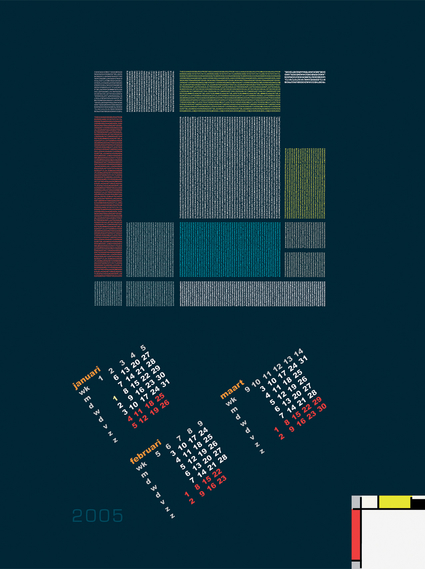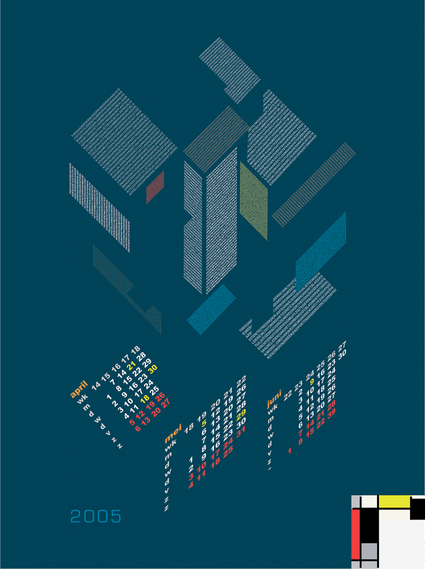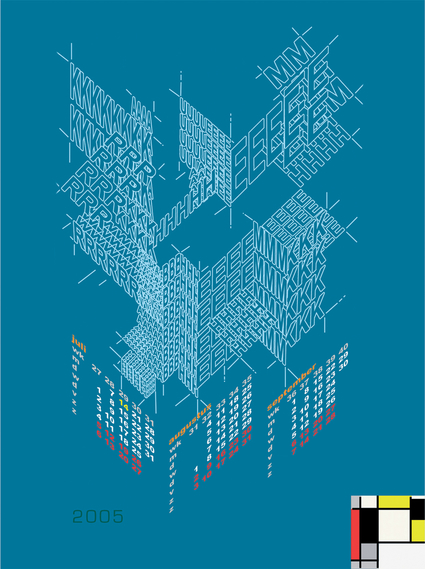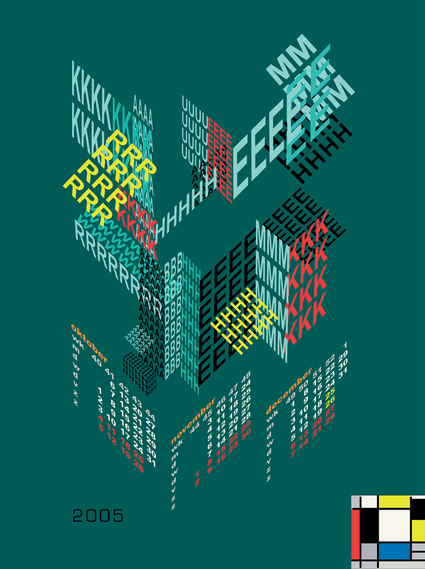De Stijl was a Dutch artistic movement founded in 1917. In a narrower sense, the term De Stijl is used to refer to a body of work from 1917 to 1931 founded in the Netherlands. De Stijl is also the name of a journal that was published by the Dutch painter, designer, writer, and critic Theo van Doesburg (1883–1931), propagating the group's theories. Next to van Doesburg, the group's principal members were the painters Piet Mondrian (1872–1944), Vilmos Huszàr (1884–1960), and Bart van der Leck (1876–1958), and the architects Gerrit Rietveld (1888–1964), Robert van 't Hoff (1887–1979), and J.J.P. Oud (1890–1963). The artistic philosophy that formed a basis for the group's work is known as neoplasticism — the new plastic art (or Nieuwe Beelding in Dutch).
Proponents of De Stijl sought to express a new utopian ideal of spiritual harmony and order. They advocated pure abstraction and universality by a reduction to the essentials of form and colour; they simplified visual compositions to the vertical and horizontal directions, and used only primary colors along with black and white. Indeed, according to the Tate Gallery's online article on neoplasticism, Mondrian himself sets forth these delimitations in his essay 'Neo-Plasticism in Pictorial Art'. He writes, "... this new plastic idea will ignore the particulars of appearance, that is to say, natural form and colour.
On the contrary, it should find its expression in the abstraction of form and colour, that is to say, in the straight line and the clearly defined primary colour." The Tate article further summarizes that this art allows "only primary colours and non-colours, only squares and rectangles, only straight and horizontal or vertical line." The Guggenheim Museum's online article on De Stijl summarizes these traits in similar terms: "It [De Stijl] was posited on the fundamental principle of the geometry of the straight line, the square, and the rectangle, combined with a strong asymmetricality; the predominant use of pure primary colors with black and white; and the relationship between positive and negative elements in an arrangement of non-objective forms and lines."



